Get PeakVisor App
Sign In
Search by GPS coordinates
- Latitude
- ° ' ''
- Longitude
- ° ' ''
- Units of Length

Yes
Cancel
Share ×

Scan the QR code and open PeakVisor on your phone
❤ Wishlist ×
Choose
Delete
Silver Star Provincial Park is in the Okanagan region in south-central British Columbia, Canada. Silver Star Mountain is the central feature of this park where winter sports such as cross-country skiing, snowshoeing, and snowmobiling are incredibly popular. The park also surrounds the popular Silver Star Mountain Resort which is located along the eastern slopes of Silver Star Mountain.
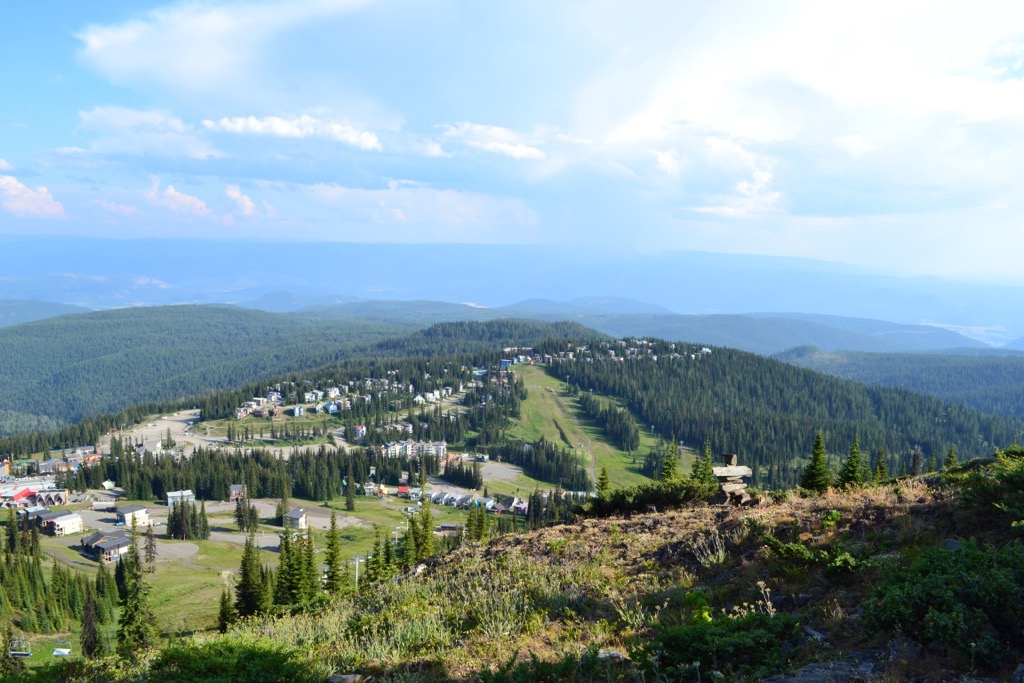
Northeast of the city of Vernon, Silver Star Provincial Park is one of many wilderness areas in the Regional District of North Okanagan of British Columbia, Canada. The 5,573 hectare park encompasses Silver Star Mountain (1,888 m/4,423 ft) and due to a combination of snow and slope conditions, it is a winter wonderland and an ideal location for winter recreation.
Silver Star Mountain Resort is situated upon the eastern slopes of Silver Star Mountain and is not included in the protected area of the park. The Sovereign Lake Nordic Club is located in the park and they take responsibility for grooming and providing access to many cross country ski trails and snowshoeing trails.
Primary access to the park, Nordic Club, and Silver Star Mountain Resort is by following Silver Star Road northeast from Vernon. The park can also be accessed from the northside, during the winter, through the snowmobile trails in the adjacent Trinity Ricardo Trail Recreation Site.
Silver Star Provincial Park is in the Okanagan Highlands which is a transition zone between the Thompson Plateau and the Monashee Mountains. The rounded summit of Silver Star Mountain is a typical feature of the regional landscape.

Local associations such as the Sovereign Lake Nordic Club and the Vernon Snowmobile Association maintain many of the trails in the park. The park is open to the public; however, visitors wishing to use the maintained trails are required to have a membership or a day pass. There are still many areas of the park that don’t require a pass and no passes are required for summertime hiking or cycling.
The following are some nearby and regional alternatives to Silver Star Mountain Provincial Park.
Silver Star Provincial Park is in the Okanagan Highlands which are bounded by the Thompson Plateau to the west and Monashee Mountains to the east, which are a subrange of the Columbia Mountains. Most of the interior of British Columbia consists of plateaus, but along the eastern edge of the plateaus there is a gradual transition to the Columbia Mountains where a belt of highlands has developed.
The Okanagan Highlands are part of a larger area known as the Eocene Okanagan Highlands which encompasses Early Eocene geological formations that span 1,000 km (620 mi) of British Columbia and Washington in the United States. Fossil rich formations were created as sediment filled ancient lakes.
In general, the Okanagan Highlands are referred to as a Tertiary erosion surface, referring to deposits that created layers of rock between 66 and about 3 million years ago. Geologically speaking, the Okanagan Highlands are quite young and generally consist of layers of shale and coal. These layers cover older formations of sediment and especially volcanic rocks from the Mesozoic.
The accumulating silt helped to preserve a record of the ancient flora and fauna of the region. Indeed, the Eocene Okanagan Highlands have been called a Lagerstätten, which is a term used to describe an area with extraordinary fossils which have been exceptionally preserved in a sedimentary deposit. There are many exceptional fossils that date from the Eocene through the Miocene in the region.
The layers of sediment were created and deposited as streams and rivers eroded the upland areas. The Tertiary was a time of uplift for the Okanagan Highlands and as such, the streams and rivers highly dissected the region to create the topography as we see it now.
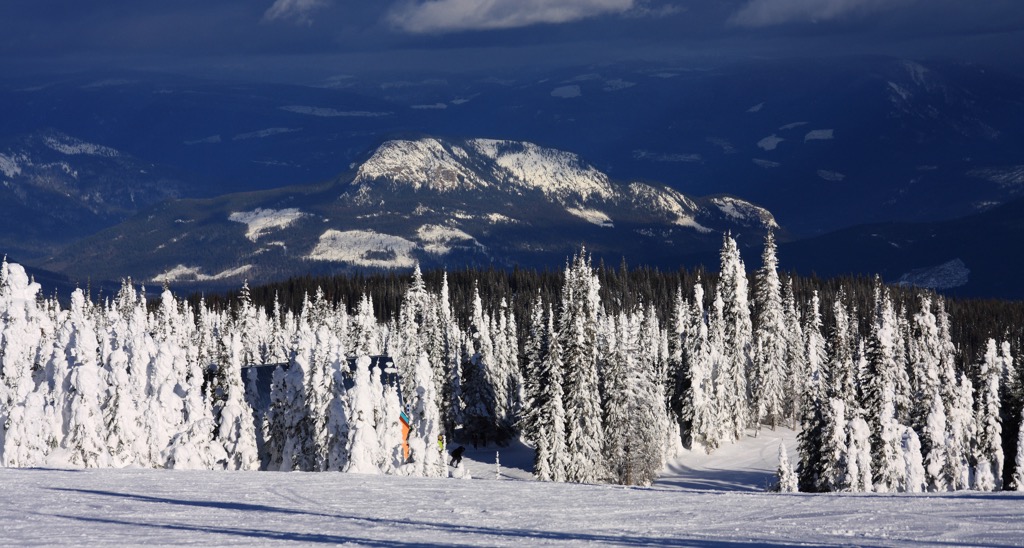
During the Early Tertiary, there was a regional thinning of the Earth’s crust which allowed for intense heat to turn the lower layers of sediment into a metamorphic rock, called gneiss. As gneiss is more durable than the surrounding shale, the differential weathering is what produces many of the gentle, step-like slopes in the region.
The major rivers of the area are the Kettle and Okanagan rivers, and all their tributaries helped form the dissected topography of the highlands. In the east, along the Columbia Mountains, the uplift was greatest and as such the rivers and streams flowed faster, greatly eroding the sedimentary layers.
Mountains, such as Silver Star Mountain, and the other mountains of the Okanagan Highlands were created when the erosion of the initial plateau was complete or almost completed. Silver Star Mountain is mainly composed of lavas and pyroclastic rocks from the Jurassic and Triassic.
During the Pleistocene, ice covered British Columbia at an average elevation of 2,440 m (8,000 ft) and in general had a major effect upon the topography of the province. However, the Cordilleran ice sheet had little influence in the Okanagan Highlands where it did little more than round some of the already rounded summits and ridges.
Silver Star Provincial Park is situated in the Okanagan Highlands which are a transition zone between the Thompson Plateau and the Monashee Mountains range of the Columbia Mountains. Rising up the slopes of Silver Star Mountain the park encompasses distinct ecologies including the Interior Douglas-fir zone and the Engelmann Spruce – Subalpine Fir zone.
In general, Silver Star Provincial Park is home to stands of old growth Douglas fir and ponderosa pine, as well as subalpine fir, and Engelmann spruce. The lower elevation forests are dominated by Douglas fir; however, regular forest fires have created stands of even-aged lodgepole pine. Western red cedar and western hemlock can be found in the forests of the lower elevations as well.
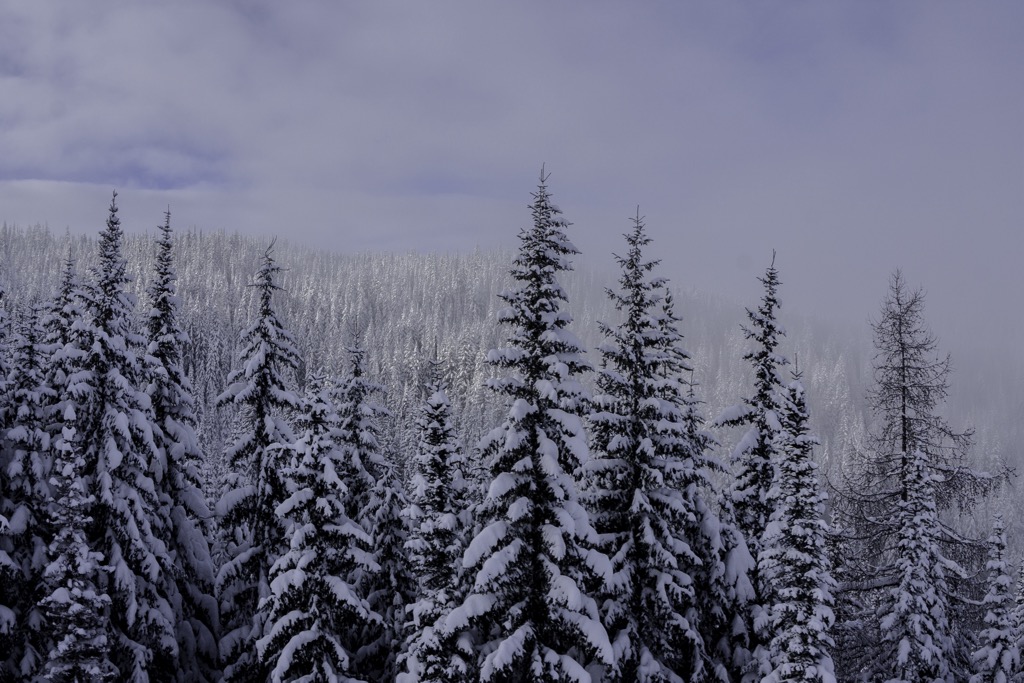
The Okanagan Highlands have an interesting climate where they receive significant snowfall at the higher elevations. As such, the cedar-hemlock forests give way to the hardier spruce hybrids and subalpine fir.
The highest parts of Silver Star Mountain are part of the Alpine zone and are part of the Silver Star Mountain Resort. During the summer, the peak is rocky with a general covering of shrubs and heath.
Most of the prime recreational terrain in Silver Star Provincial Park is located upon the upper slopes of the mountains between the stands of Engelmann spruce and subalpine fir. These are the hardiest of the region’s trees and are the ones that can withstand the long, cold winter temperatures that persist among the higher elevations.
The wilderness area of Silver Star Provincial Park is too small to contain the full range of most larger mammals. However, elk, grizzly bears, deer, moose, and cougars may be seen or encountered in the park.
The Okanagan Highlands have been inhabited for thousands of years, first by different indigenous cultures and then the region was also occupied by European descendant settlers. Silver Star Provincial Park is in the traditional lands of the Shuswap and the Okanagan First Nations.
The indigenous inhabitants of the region are generally descended from members of the Interior Salish Culture, which displaced the previous cultures in Interior British Columbia about 4,000 years ago.
The First Nations traditionally hunted elk, big-horn sheep, caribou, bear, and deer. Sheep and deer were certainly the most common; however, they were also known to have joined hunting parties that forayed east of the Rockies to hunt buffalo along the eastern slopes and in the prairies.
It was common for the women to cure fish, dry meat, prepare skins, and collect roots, berries, and wood. It was about 3,000 years ago that the Interior Salish culture was at its pinnacle throughout the Okanagan valleys and highlands, with an estimated population of about 12,000 people in the region.
In the early twentieth century there were over a dozen mineral claims registered upon and around Silver Star Mountain, which was originally named Aberdeen Mountain, in honor of Lord Aberdeen. Lord Aberdeen was the owner of the nearby Coldstream Ranch and a Governor General of Canada between 1896 and 1926.
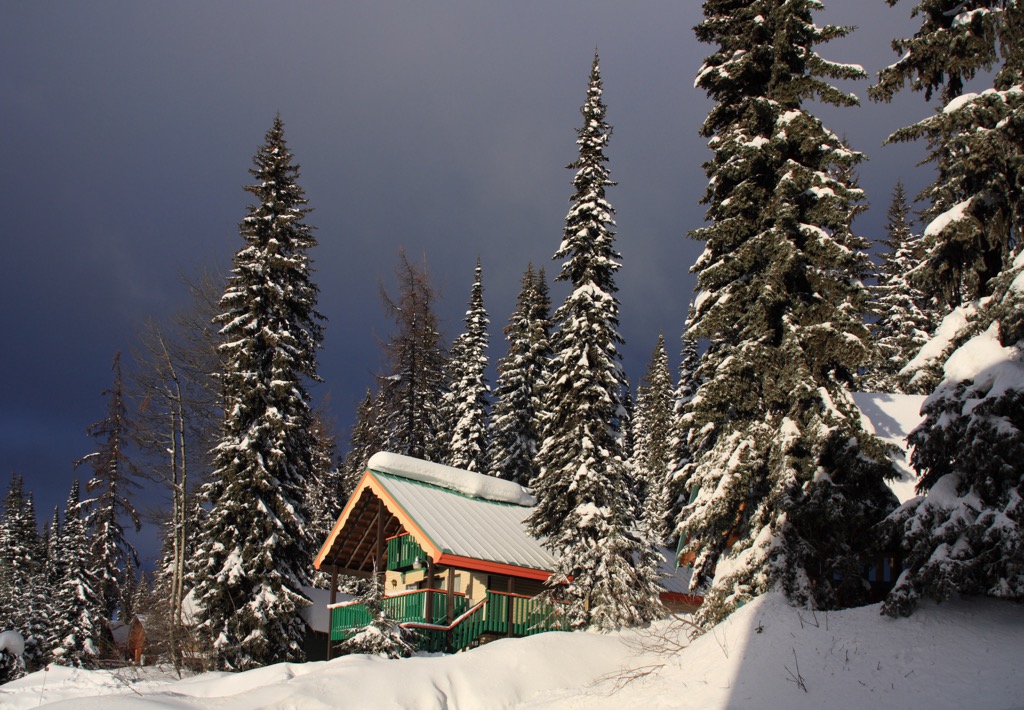
While there were many mineral claims, few were actually developed into mines; however, there were some silver mines in the region. Aberdeen Mountain was renamed Silver Star Mountain in 1952, possibly because of its sparkling appearance and nearby silver mining claims.
In 1930, Bert Thorburn, a resident of Vernon, became the first person to ski in the Silver Star area. The first rope tow was built on Burney Ridge but was later moved to Lavington. However, the problem local skiers had with their current hill was that due to the warm climate at the lower elevations, they could only ski for a few months of the year.
It wasn’t until 1957 that Silver Star Sports got permission from the provincial government to build a ski hill in Silver Star Provincial Park. Since then, more facilities and lifts have been constructed and now Silver Star Mountain Resort is perched upon the slope of the mountain.
The mountain has an annual snowfall of 7 m (23 ft) and there are over 130 marked trails and 760 m (2,500 ft) of elevation drop for skiers to enjoy. There are also 12 lifts to get skiers to the top in the winter and mountain bikers in the summer.
The essence of sport skiing in these early days of the sport in the Okanagan was a wild mix of several ski disciplines. The annual four-way championships consisted of slalom, downhill, cross-country, and ski jumping events. Those involved with the early days of Silver Star Mountain Resort were also the pioneers of the Sovereign Lake Nordic Club.
Carl Wylie started the Silver Star Ski Club in 1938 which would evolve to become the Sovereign Lake Nordic Club, with its lodge in what would become Silver Star Provincial Park. In 1940, Silver Star Provincial Park was established as a Class A park, and later, in 1958 it became a Class C park to allow for the commercial development of Silver Star Mountain Resort.
Silver Star Mountains is an incredible winter destination that has terrain for downhill and cross-country skiing. It is also a popular location for snowshoeing and driving snowmobiles.
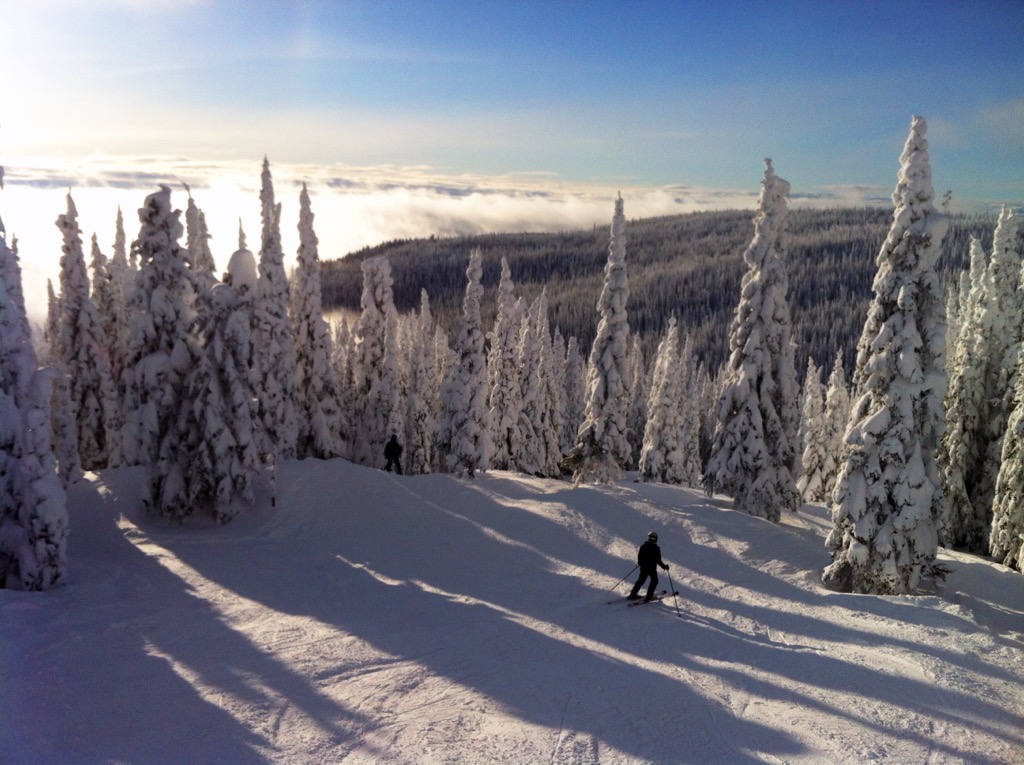
Winter is certainly the most popular time to visit Silver Star Provincial Park and its adjacent features. The following are some of the activities that are enjoyed in and around the park.
The Sovereign Lake Nordic Club operates the Nordic Centre in Silver Star Provincial Park. The club takes responsibility for grooming over 50 km (30 mi) of trails in the park for cross-country skiing, which connect with another 55 km (33 mi) of groomed trails in Silver Star Resort.
There are also 14 km (8.4 mi) of snowshoe trails and an additional 12 km (7.2 mi) of ungroomed ski trails around the lodge. During the winter, the Nordic Centre is open, and it has a full service day lodge, ski school, night skiing, and biathlon range, and it hosts many activities throughout the season.
The climatic conditions of the Okanagan Highlands create amazing snow conditions at the upper elevations of the mountains. One of the local clubs hosts a warming hut upon the mountain and there are trails suitable for all levels or riders.
Trails are not only contained to Silver Star Provincial Park, and many of the trails extend through adjacent recreational areas. Furthermore, there is a warming hut maintained by a local club and snowmobile tours are available from several local businesses. It’s an exciting way to experience the winter terrain of the Okanagan.
While not part of Silver Star Provincial Park, the resort is encompassed by the park and many hiking and ski trails connect with the resort property.
Silver Star Mountain Resort was created in the late 1950 and has grown to be a popular location for locals and attracts many regional skiers and mountain bike riders. There are 12 lifts to service the mountains from which riders can descend up to 760 m (2,500 ft) on one of the over 130 trails.
The resort also has a network of over 50 km (30 mi) of cross-country ski trails for guests to enjoy.
At the base of the ski hill, the resort village has many hotels, restaurants, and other amenities. Typically once you arrive, you won’t need your car, as everything around the resort is nearby and all you have to do is walk to where you want to go.
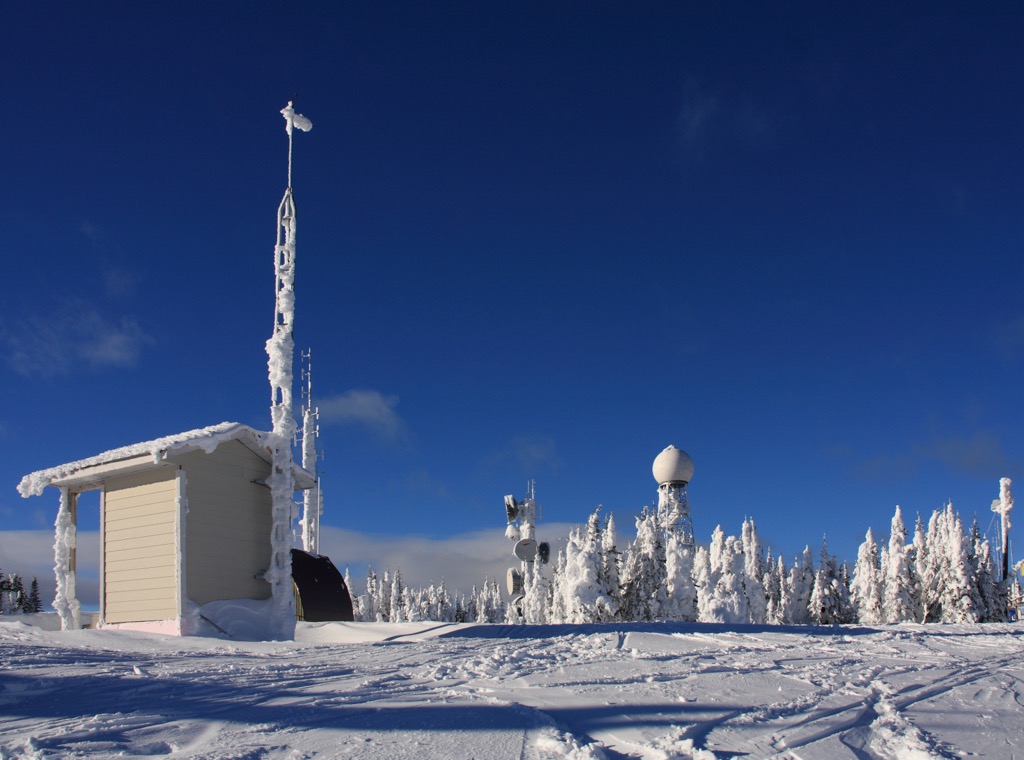
While winter sports certainly dominate Silver Star Provincial Park, the park is a beautiful place to visit during the warmer months as well. Thanks to the efforts of the ski and snowmobile clubs there is an incredible network of trails in the park.
Some of the popular hiking destinations such as the Shuswap Lookout and the peak of Silver Star Mountain lay outside the boundaries of the park. However, park trails connect to resort trails to allow visitors access to these scenic lookouts.
Silver Star Provincial Park is located in the Okanagan Highlands, adjacent to the beautiful Okanagan Valley, where there are many activities to do and many wonderful places to visit. The following are some of the major cities and accommodations.
It tough to stay any closer to Silver Star Provincial Park than by staying on the actual mountain at Silver Star Mountain Resort. There are many options for accommodation from a standard hotel room to multi bedroom luxury condominiums and vacation homes. While at the resort all restaurants and activities are within walking distance.
There are many restaurants that will cater to a variety of appetites which you can visit between the many activity options at the resort. There are ski shops on site, as well as a fitness center, art gallery, and markets.
Some of the onsite activities include downhill skiing, skating, a tube park, cross country skiing, mini snowmobiles, snowmobile tours, and snowshoeing. The cross country and snowmobile tours link with the trails in the adjacent Silver Star Provincial Park.
During the summer at the resort lifts bring hikers and mountain bikers up and down the hill so they can explore Silver Star Mountain without all the snow.

Vernon is a city at the north end of Okanagan Lake and Kalamalka Lake in the Regional District of North Okanagan. It is less than a 25 km (18 mi) drive from Vernon to reach Silver Star Provincial Park.
The city is situated among rolling hills that are home to farms, vineyards, orchards, and ranches where the summers are hot and the summers are relatively warm. It was the short winters that pushed the local skiing enthusiasts higher into the mountains, until they were finally able to build facilities upon Silver Star Mountain.
While Silver Star Mountain Resort is certainly a popular winter destination from the region and community, there are many more places for winter and summer activities. The nearby Silver Star Provincial Park is home to the Sovereign Lake Nordic Center that hosts many high-level cross country skiing and biathlon events. There are also many opportunities to follow the trails in the park on snowshoes and snowmobiles.
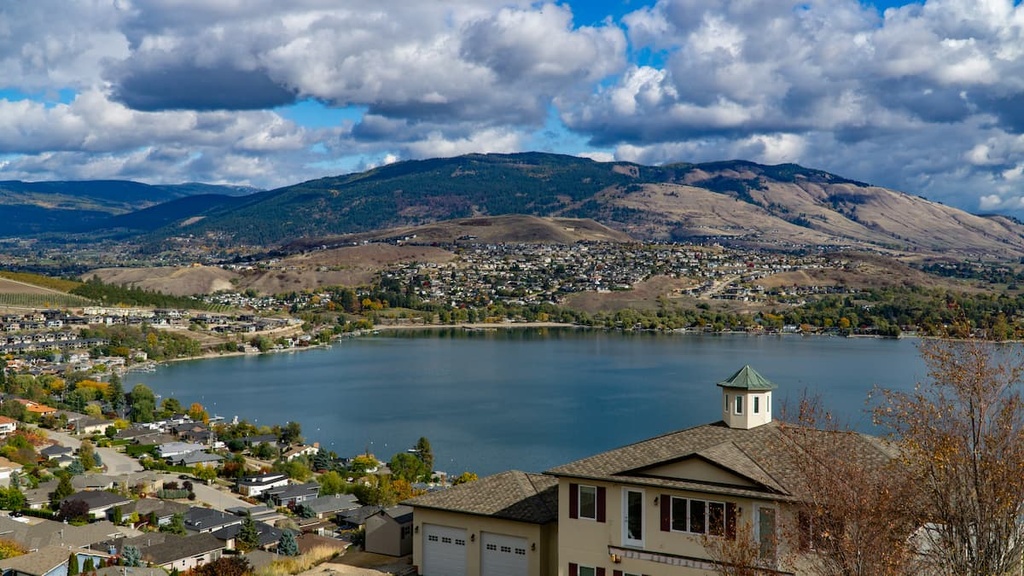
During the summer, the cross-country skiing and snowmobiling trails make for wonderful hiking trails. In Silver Star Provincial Park there are many trail loops to follow and they do connect with the trails at Silver Star Mountain Resort so that you can reach the lookouts and the summit of Silver Star Mountain.
If visitors are looking for other places to adventure while staying in Vernon, aside from Silver Star Provincial Park, a couple destinations are Graystokes Provincial Park, and Wrinkly Face Provincial Park. There are also many excellent places along the lakes to visit, such as Kekuli Bay Provincial Park, Ellison Provincial Park, and Fintry Provincial Park which is home to a historical homestead and a stunning waterfall.
Kelowna is in the Regional District of Central Okanagan and is usually seen as the capital of the Okanagan. Silver Star Provincial Park is about 75 km (45 mi) south of Kelowna and the best way to reach the park from the city is to take the Okanagan Highway through Vernon.
Known for the Okanagan Lake, the region around Kelowna is typically quite warm and summertime visitors come from across Canada to enjoy the beaches and boating upon the lake. When visitors aren’t enjoying the lake, they often visit the over 200 wineries and vineyards in the region or one of the many orchards to find fresh fruit.
Many of the lakeside parks have short hiking trails for visitors to enjoy, such as those at Kekuli Bay Provincial Park, Ellison Provincial Park, and Fintry Provincial Park; however, there are longer and more scenic trails in some of the other nearby parks such as Okanagan Mountain Provincial Park and Myra-Bellevue Provincial Park.
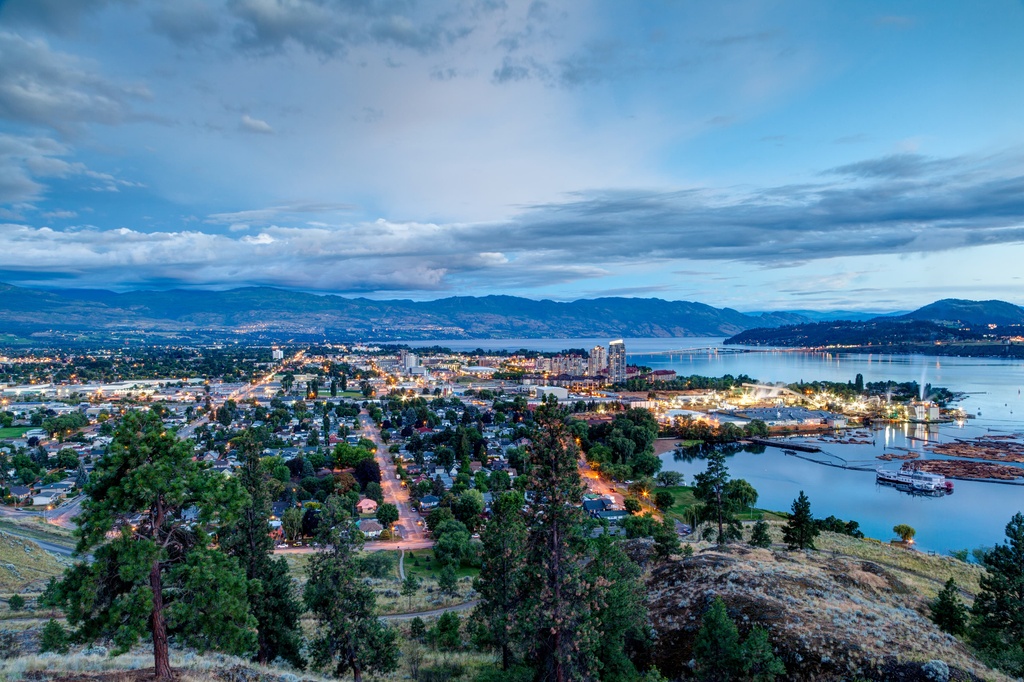
In Myra-Bellevue Provincial Park visitors can walk or cycle along the route of the old Kettle Valley Railway, passing through the old tunnels and riding or walking over the trestle bridges. Fintry Provincial Park is another historic park that is the location of one of the valley's first homesteads and settlements and many of the historic structures still remain to be visited.
Explore Silver Star Provincial Park with the PeakVisor 3D Map and identify its summits.







